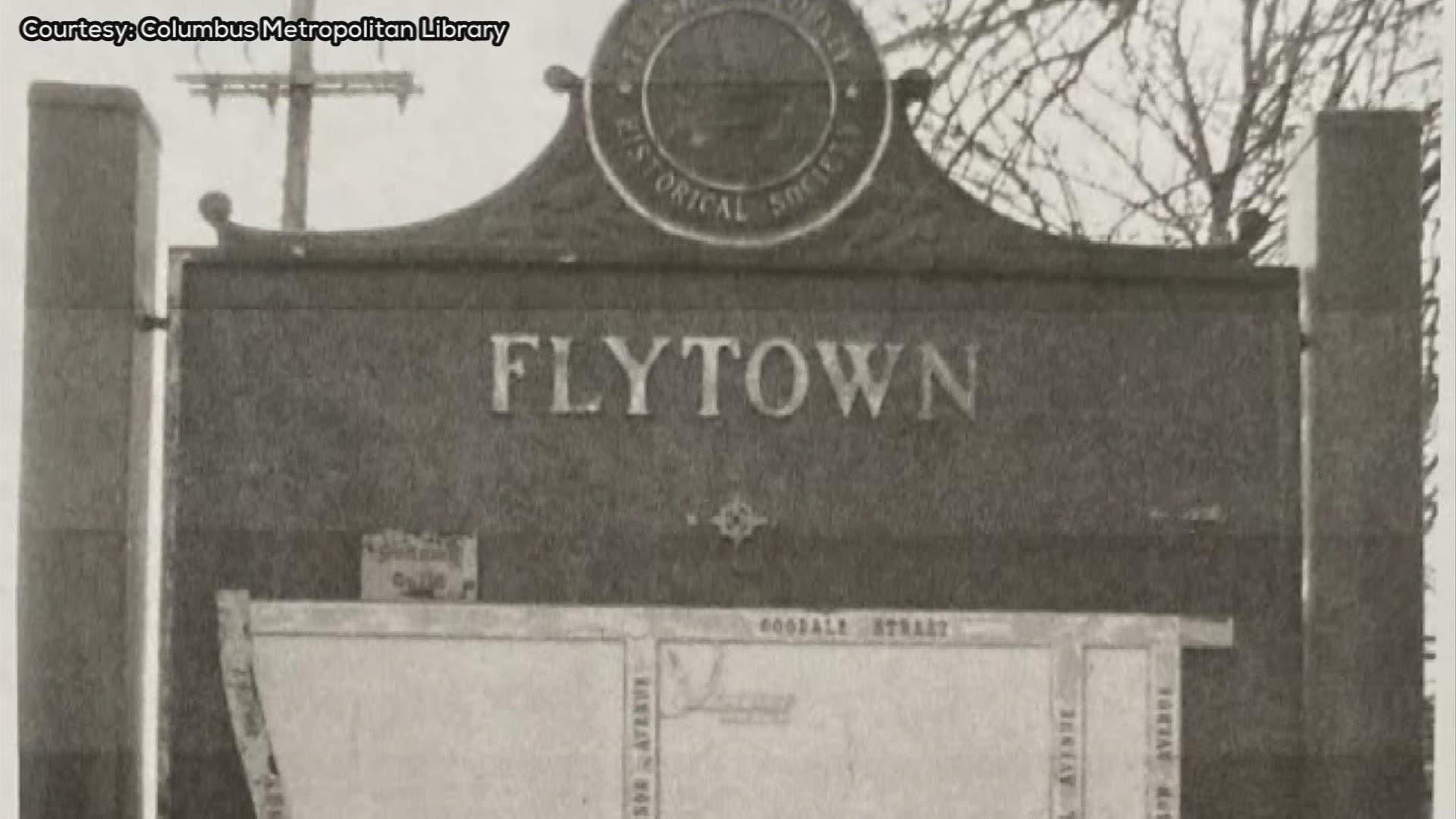Flytown was an industrial community located near what is known now as the Short North.
Not much of Flytown remains, except for the memories and its history.
Historian Doreen Uhas Suaer from the Columbus Landmarks Foundation said it was a neighborhood full of working-class families. The families living there brought in low to moderate incomes.
A significant monument of Flytown was the Union Station, which is where the Greater Columbus Convention Center is now.
It was built in the 1850s as a port of entry for people entering Columbus and then remodeled in 1897 as the new Union Station.
"There were Italians and Greeks and Germans, Hungarians although many of them settled on the South end, African American, Jewish, so I think it's a pretty large mix of people," Uhas Sauer said.
Union Station was torn down in 1979. A piece of it remains today in McFerson Commons Park.
Another landmark in Flytown is the Godman Guild House.
It was erected in 1898 for the Godman Guild Association to serve families, especially youth, who may have been having a tough time.
Ms. Anna B Keagle, a Sunday school teacher, founded The Godman Guild Association.
Back then, historians said they hosted events, would provide food and became a support for many families.
To this day, the Godman Guild Association focuses on Youth and Family education and Workforce Development.
From the mouths of former residents, Flytown was a model for integration in Columbus.
Former resident, Tyrone Couch, said his family moved from Georgia in 1940 as part of the Black migration.
"It was predominately Irish, German, poor Irish and German people living there," Cough said.
His family moved around a lot as changes slowly started to take place in Flytown. Couch said one of those changes happened to be when I-670 cut right through Pennsylvania Avenue where he was living.
Chris Campbell, who also was a former resident, moved there when he was six years old in 1965. He moved from Worthington.
He remembers kids taking up the neighborhood and constantly playing in the streets.
Campbell said he also remembers moments of talking with peers in school but not interacting as much with them outside of class.
"At that time, there was some unofficial segregation in Columbus," Campbell said.
However, being the age he was, he said he didn't know much of what was happening so he played with who he wanted to play with.
As for the name of why Flytown was created, it was because just as quickly as the houses went up, they came down.
The houses in Flytown fell apart easily and there were many condemned.
In the 1950s, the city began its community urban renewal plan.
There was a report given to the people living in Flytown, which we received from the Columbus Landmarks Foundation.
In the report, the urban renewal plan, "works on all fronts, to improve neighborhood quality and housing quality."
In the document, the city mentioned that each year the Federal Government reviewed progress in how communities attack various urban problems.
Within the hundreds of pages, the Goodale Urban Renewable Project was mentioned. In 1961, new housing was proposed called "Thurber Village."
The document states that "The area prior to that time was known to Columbus as Flytown, one of the worst slums in the city. For every $17 received in taxes from this area, $73 was poured back in for city services."
"My family, most of them were forced to move out," Couch said.
Couch said for him and his family, they couldn't afford to live in the houses that were being discussed and planned.
He said many Flytown families couldn’t afford the new version of the neighborhood
According to historians, years of planning and with private investors, Flytown was gone.
However, the memories will always be there and they are cherished.
"My heart is in the old Flytown," Couch said.

